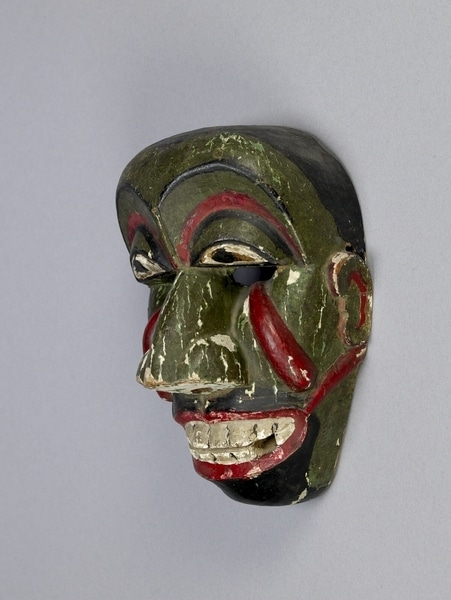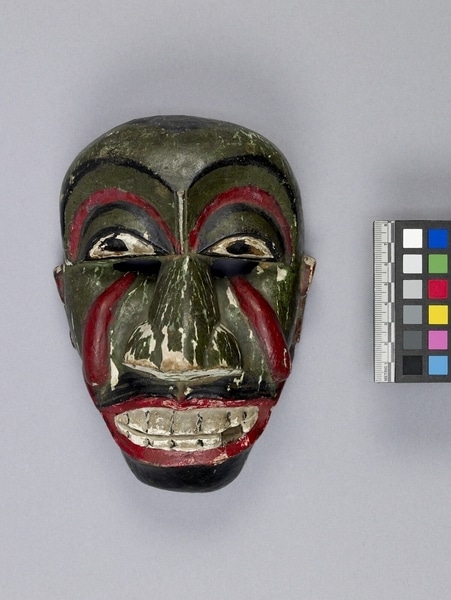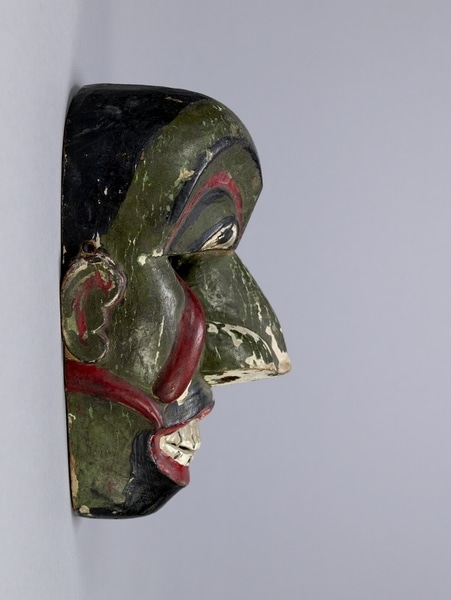Mask Item Number: Eh24 from the MOA: University of British Columbia




Description
Mask depicting an ovoid-shaped green humanoid face. Wide open mouth, red lips, and white teeth outlined in black with one missing tooth. Holes below each eye. Rounded raised ridges that are painted red run vertically down the cheeks. Two slightly narrower red ridges begin at each mouth corner and extend out horizontally. The ears are green with red trim, and the thin eyebrows are black. The nose has a wide bridge and large nostrils. Black plainted hair, moustache, and beard.
History Of Use
Soldier mask is used in the Kolam ceremony which is a dance drama performed for entertainment. The ceremony consists of three stages: the first shows the origin of Kolam; the second consists of the dances of human, animal and divine or mythical beings; and the third recounts a tale. In this case the soldier returns from battle to his wife who does not recognize him: he describes his battle experiences, then discloses his identity. This provides an opportunity for describing famous Sinhalese victories
Cultural Context
folk drama
Iconographic Meaning
Missing tooth, rounded ridges representing leeches characterize a soldier. Reference is to a soldier who after being wounded in battle paused to drink at a pool. While drinking, blood-sucking leeches attached themselves to his facial wounds. Some of these masks are much more grotesque than this example. Green can be used to denote an unusual character
Item History
- Made in Sri Lanka before 1978
- Collected during 1978
- Owned by Jason Schoonover before February 10, 1981
- Received from Museum of Anthropology Shop Volunteers (Funding source) and Jason Schoonover (Seller) on February 10, 1981
What
Who
- Culture
- Sinhalese
- Previous Owner
- Jason Schoonover
- Received from
- Museum of Anthropology Shop Volunteers (Funding source) and Jason Schoonover (Seller)
Where
- Holding Institution
- MOA: University of British Columbia
- Made in
- Sri Lanka
When
- Creation Date
- before 1978
- Collection Date
- during 1978
- Ownership Date
- before February 10, 1981
- Acquisition Date
- on February 10, 1981
Other
- Condition
- fair
- Accession Number
- 0704/0023